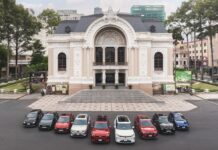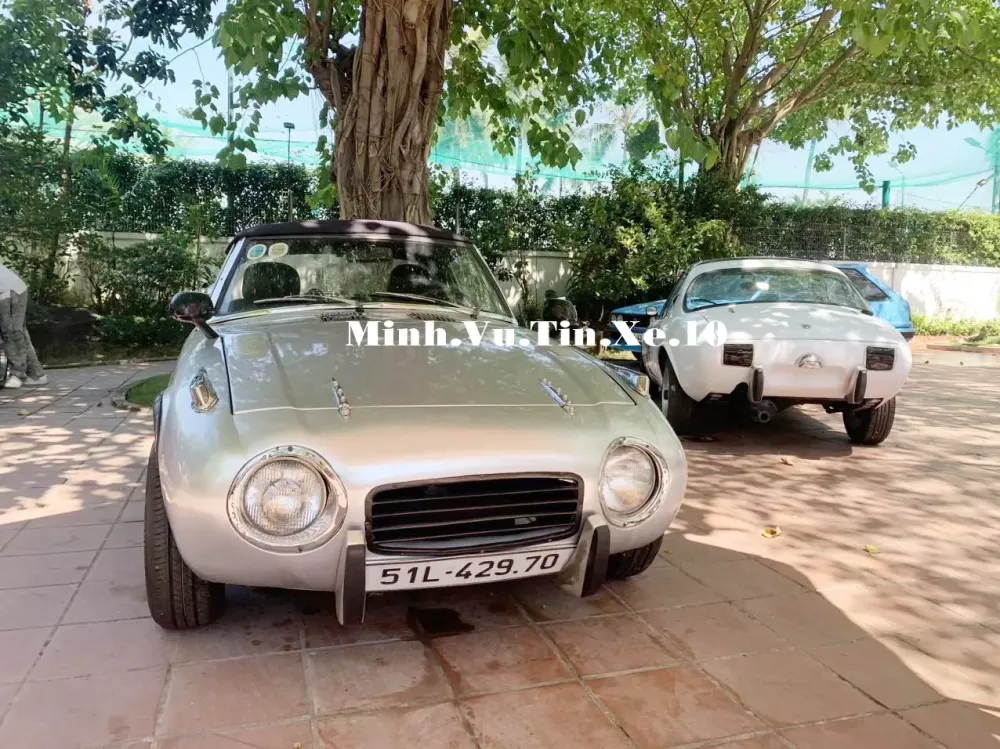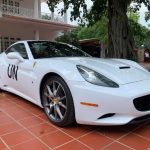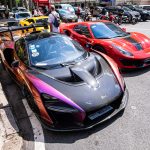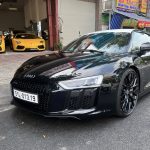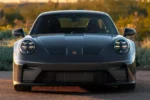Recently, the photos of the car garage at Mr. Dang Le Nguyen Vu’s villa in Thu Duc City, Ho Chi Minh City, have surprised car enthusiasts. The reason is that the spacious tiled yard no longer features any luxury cars, but instead is filled with dozens of vintage sports cars.
This is not surprising as in the past year, the Chairman of Trung Nguyen has developed an interest in JDM cars. He buys any JDM car that’s for sale to quickly expand his collection. Moreover, he also helps to revive abandoned or broken JDM cars that people have discarded or don’t know how to repair.
Toyota Sports 800
In the photos of “Qua” Vu’s car park that were shared, the presence of 2 Toyota Sports 800 sports cars is noteworthy. These cars were once known as the supercars of Japan.
One car is silver, while the remaining Toyota Sports 800 is in an impressive white color. If they appeared individually, there wouldn’t be much to talk about, but having a pair of them in one place is prestigious for car enthusiasts and owners who truly know how to play.
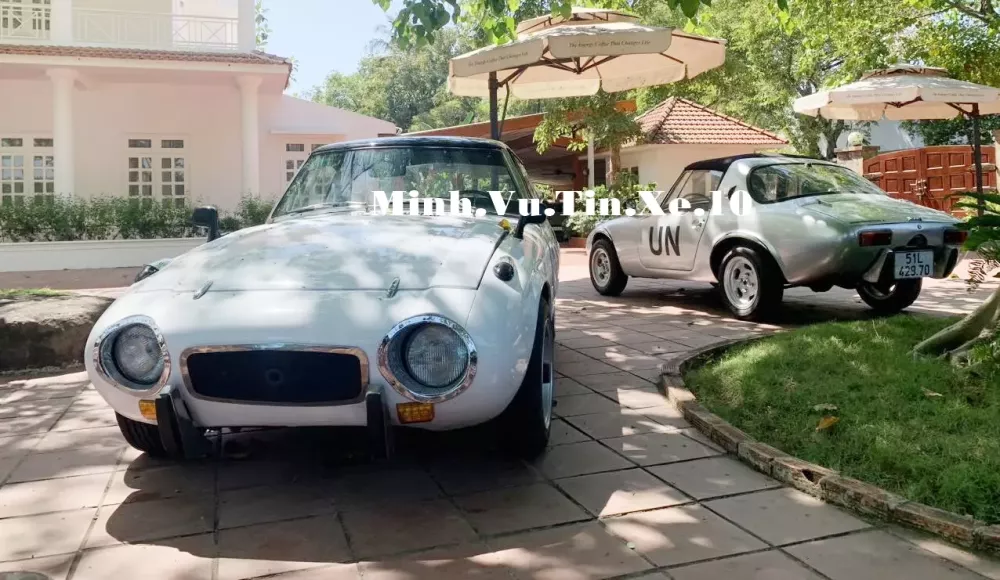
The Sports 800 is the first sports car produced by the Japanese automaker Toyota, and there are not many of them in Vietnam. The Sports 800’s prototype, called the Publica Sports, was first introduced at the 1962 Tokyo Motor Show. It featured a futuristic sliding canopy and used the drivetrain from the Publica 700, an economical car in the Japanese market.
The Toyota Sports 800 is affectionately called “Yota-Hachi,” which is the Japanese abbreviation for “Toyota 8”. In Japan, this car is exclusively sold through Toyota Japan’s retail channel called Toyota Publica Store, along with the Publica.
Exterior Design
The Toyota Sports 800 has a cute rounded appearance, with the main highlight being the large round headlights and chrome eyelids. The front of the car has a low center of gravity, a low-set grille, and additional protruding bars for front and rear protection.
The engine hood of the Toyota Sports 800 is located at the front and opens upward with hinges on top, which is quite interesting. The convertible top is very appealing, with a rear window that provides a clear view of the interior, creating an open feeling for the rear of the car.


The Toyota Sports 800 sports car has dimensions including a length of 3,580 mm, width of 1,465 mm, and height of 1,175 mm. It has a wheelbase of 2,000 mm and weighs approximately 580 kg.
The aerodynamic design of the Toyota Sports 800 was carried out by Shozo Sato, a designer borrowed from Datsun, and Toyota engineer Tatsuo Hasegawa. Hasegawa used to be an aircraft designer during World War II, and the result is that the Sports 800 is a light and agile machine.
The Toyota Sports 800 was one of the first production cars to have a lifted roof, also known as a Targa top, even before the Porsche Targa sports car. The aluminum Targa top can be stored in the trunk when not in use.
History of the Toyota Sports 800
From 1965 to 1969, about 3,131 cars were produced by Toyota subcontractor Kanto Auto Works. Only about 10% of those cars are known to still exist, mostly in Japan. Most of the 3,131 cars produced were right-hand drive models, but about 300 of them were left-hand drive models, mainly built for the Okinawa market (Okinawa, which was occupied by the United States, drove on the right side of the road instead of the left like the rest of Japan).

A very limited number of left-hand drive cars were used by Toyota for “test driving” in the United States. However, US dealerships believed that the Sports 800 would not sell well in the US, so they decided not to import or sell the car in the US market. Toyota allowed these dealerships to keep the initial batch of about 40 Sports 800 cars in the US instead of shipping them back to Japan.
There were minor design differences throughout the years. Notable differences include the change from non-synchronized to synchronized first gear in 1967, a grille and bumper change in 1968, and side markers in 1969. However, the basic body design remained unchanged.
Transmission System
A horizontally opposed 2-cylinder 790 cc boxer engine powers the Toyota Sports 800. The car is equipped with a 4-speed manual transmission.
The 2U 0.8-liter type, which produces 44 horsepower at 5,400 rpm, was produced from 1965 to 1969, while the similar 2U-B type was produced from 1966 to 1976.
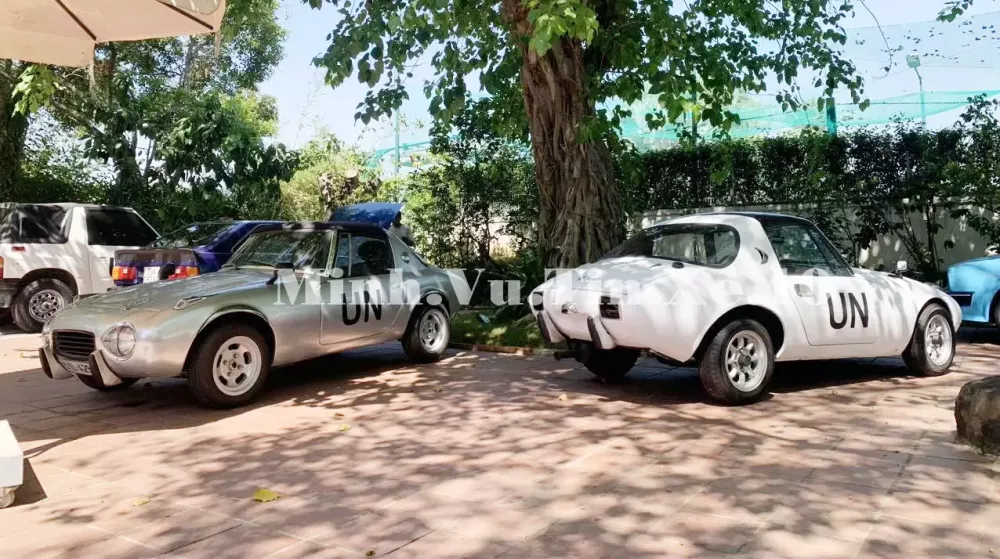

The weight is reduced by using aluminum on selected body panels and thin steel on the monocoque structure. In the initial years, even the seat frames were made of aluminum.
Toyota created a one-off prototype Sports 800 Gas Turbine Hybrid for the 1979 Tokyo Motor Show. The Sports 800’s body is also the basis for the Sports EV and Sports EV Twin electric concept cars, both of which were unveiled in 2010.
Saigon billionaire parades his fleet of luxury cars, including a unique color Ferrari SF90, to celebrate his wife’s birthday.
On his wife’s birthday, wealthy businessman Hoang Kim Khanh cruised the streets in his extravagant collection of supercars worth hundreds of billions of VND. Among them was his one-of-a-kind, uniquely colored Ferrari SF90 with the lucky license plate “thần tài” (meaning “lucky charm” in Vietnamese).



